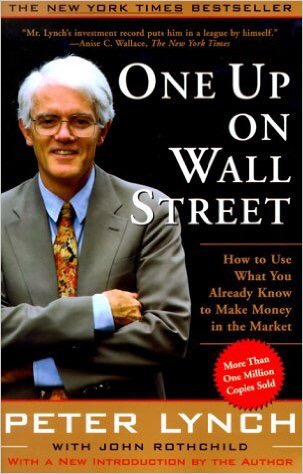

Notes from Peter Lynch’s One Up on Wall Street. A must-read for anyone interested in investing. Page after page of valuable insights from one of the greatest.
If you’re going to play the game, it helps to know the rules. 🙂
Percent of Sales – make sure whatever product you’re investigating contributes a significant percentage to company total revenues.
Price/Earnings Ratio – P/E lower than growth rate may be a bargain. Lower P/E more tantalizing, i.e. 3.1
Growth rate plus dividends divided by p/e: <1 poor, 1.5 ok, 2+ best
Cash Position – divide cash and assets by outstanding shares to determine net cash per share.
$5 in cash per share doesn’t count for much when stock is trading over $40. Trading at $15 it becomes a big deal.
Company Buybacks – good indicator that company thinks current price is a deal. History of increasing (and always paying) dividends is another good sign. Dividends also help put floors in stock prices.
Debt to Equity Ratio – how much a company owes in long-term debt (Lynch ignores short-term debt) compared to its assets. Normal is 75% equity, 25% debt. Particularly key for turnarounds.
Book Value – unreliable as assets can be grossly under- or overvalued. Overvalued assets are especially trecherous when lots of debt exists. Greatest asset plays lie in hidden unrecognized assets.
Natural resources often carried on book at a fraction of actual value.
Writeoffs – when something is written off against current earnings, earnings will increase when the writeoff ends. Potential big edge when recognized.
Tax Breaks – tax losses can carry forward and be written off against future earnings, dramatically boosting them.
Cash Flow – not going to get far if have to spend cash to make cash. $20 stock with $2 cash flow is 10:1, standard. $20 stock with $4 cash flow is 20% return in cash, terrific.
Inventories – when inventories grow faster than sales, it’s a red flag.
Growth Rate – the only one that really counts is earnings. A 20x grower selling at 20x earnings (p/e of 20) is far better than a 10x grower selling at 10x earnings – compounding FTW!
High profit margin for long term holdings, low profit margin for turnarounds.
Listen to the quarterly reports!!! So much info there, particularly forward guidance.
Check every few months to see if the story has changed.
Fast growers: what will keep them growing?
Insider and company buying are key indicators of company strength. Insider selling not so much.
It’s better to miss the first move in a stock to see if company plans work out.
Institutional ownership of 60%+ may signal time to sell.
Unless you’re confident enough in the company to buy more shares, it’s time to sell.
Be Patient – Most of Lynch’s money was made in the third or fourth year of owning something. If a stock stays like a rock for a few years and the business is still strong, the likelihood of the next major move being up is higher.
A good stock can stay relatively flat for several years, then go up 4x in two.
If all is right with the company, and whatever attracted you in the first place hasn’t changed, sooner or later patience will be rewarded.
You can make serious money compounding a series of 20-30% gains in stalwarts.
Stock prices often move in opposite directions from the fundamentals, but long term, the direction and sustainability of profits will prevail.
If a stock goes to zero, you have lost 100% of your investment, no matter what price you bought in at.
If you don’t think you can beat the market, just buy a mutual fund or S&P Index fund and save yourself the time and money.
Keep an open mind to new ideas.
Follow the free cash.




